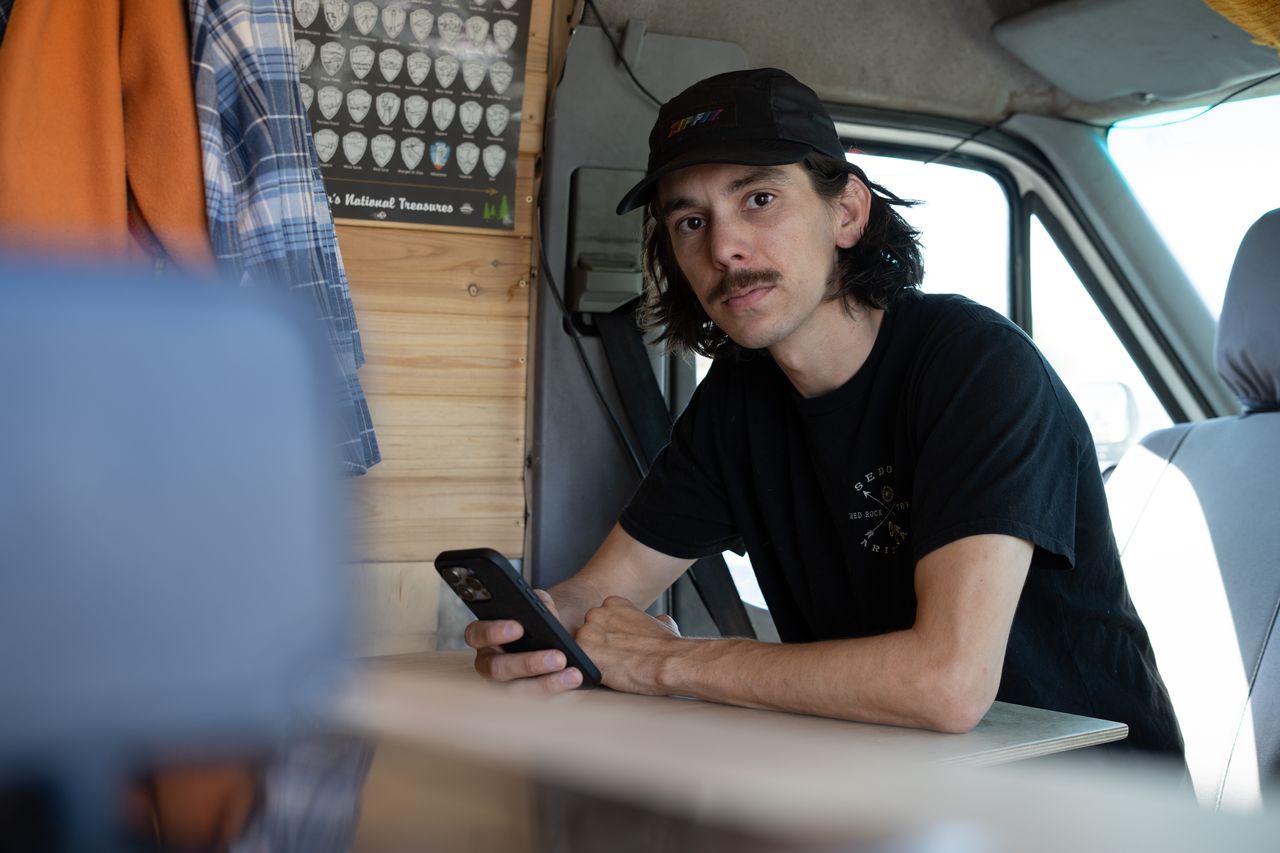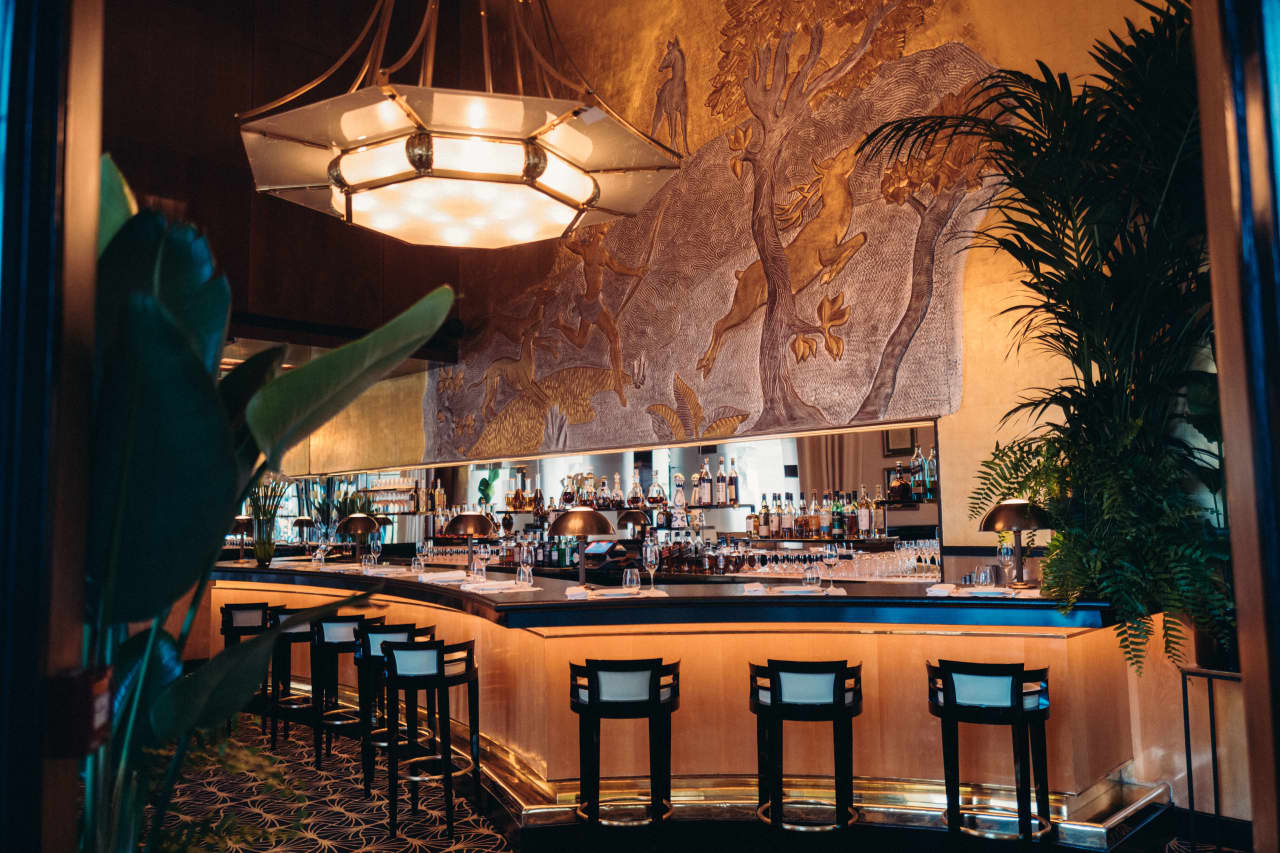It’s buyer beware in Australia’s croc country
Dreaming of a move to Queensland to escape the winter chill? Property in the far north comes with its own challenges
“A large crocodile has been spotted across the road from Warri Park Wetland (near Lakes Estate) today. The Department of Environment and Science has been notified. There will be a staff member at the site this afternoon to ensure student safety.”
This was the message posted on the Port Douglas primary school’s Facebook page in February this year. Just off the main road into town, the 2ha beauty spot is popular with dog walkers, bird watchers, joggers and kids playing after school. It’s also a desirable place to live, with about 50 homes circling the park. So why would anyone build family homes so close to a crocodile-infested swamp?
Put simply, they didn’t.
Despite having survived for an estimated 200 million years, the estuarine crocodile very nearly didn’t see out the 20th century.
Looking for more stories like this? Order your copy of the latest issue of Kanebridge Quarterly magazine here.
Unregulated hunting in the 1940s, ’50s and ’60s saw crocodile numbers drop by 95 percent, and by the ’70s they were critically endangered. Crocs were belatedly afforded protection, and since then the numbers have steadily risen back up to pre-hunting levels. Salties haven’t moved into our habitat — we moved into theirs, while they were away.
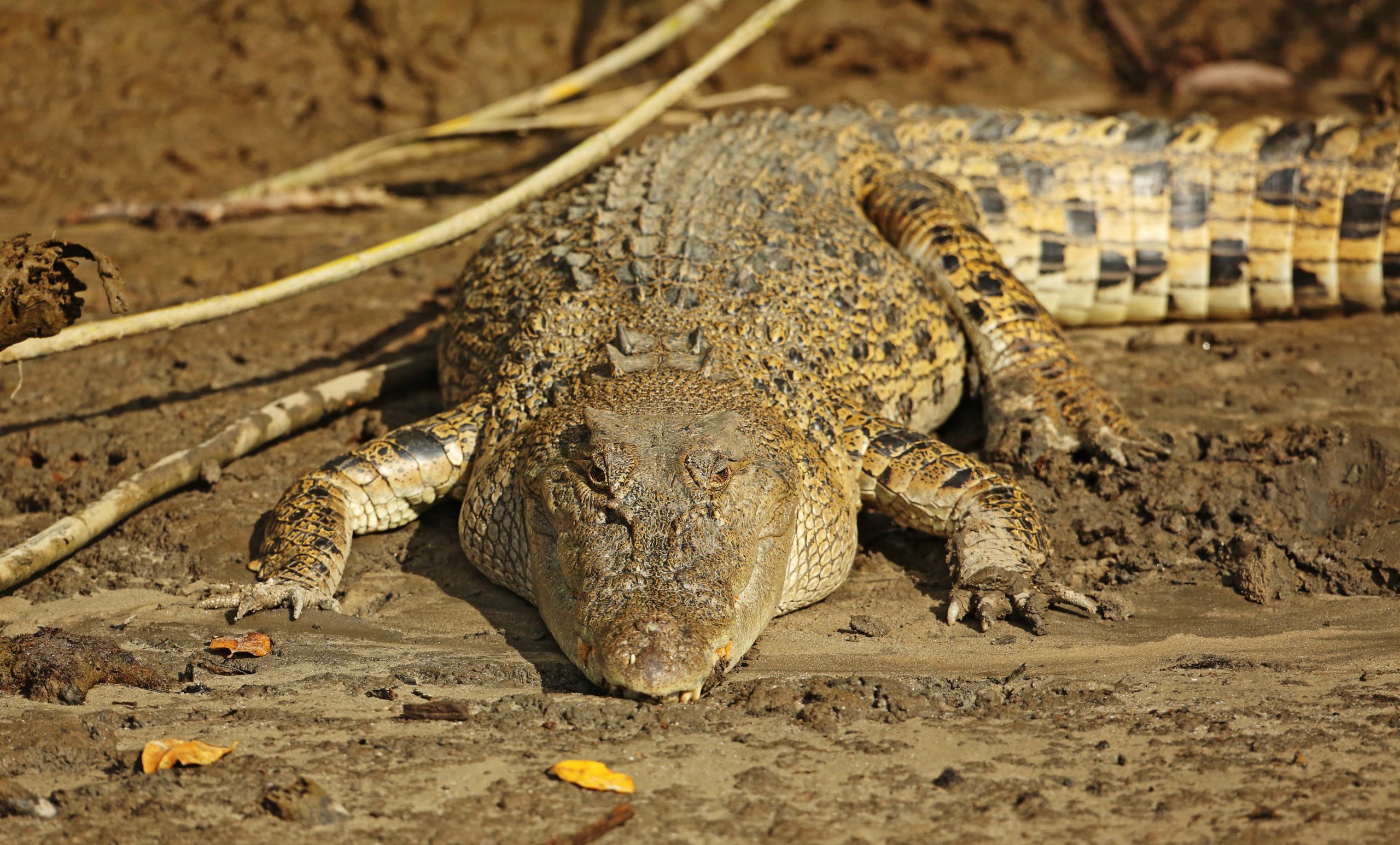
Soula Kazakis from Ray White Port Douglas (pictured) has been working this patch of real estate for the past two decades.
“Croc sightings in Warri Park don’t surprise me,” she says. “I’ve seen them there multiple times. The council is aware, and there’s a history of having traps in the lakes to catch them.”
Like many who live around Port Douglas, Kazakis has her own near-miss story. Back in 2015, on a sunny winter’s day, she was showing a family from Melbourne a house on a street that backs onto the lake.
“They asked me what was behind the house, so I took them for a walk,” she says. “Their four-year-old boy was running ahead of us, jumping and laughing. I was following behind with the parents, chatting all things real estate, when I looked up and saw a big croc sunbaking with its mouth open on the grassed area directly in the pathway of their child. I’ve never run so fast in high heels! I grabbed his arm, and he was airborne just in the nick of time. Needless to say, they didn’t buy in Port Douglas.”
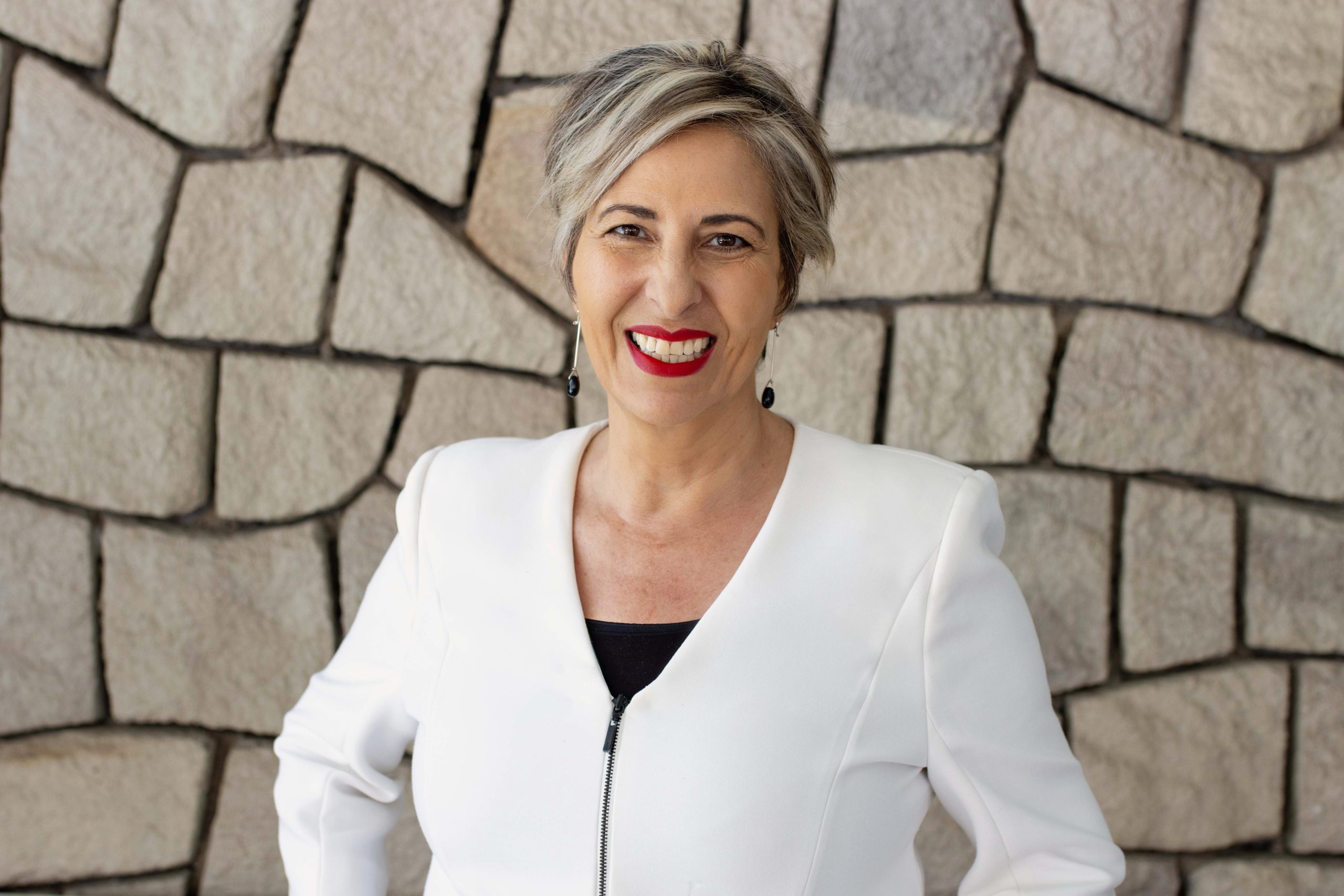
Far North Queensland has been experiencing a property boom in the post-COVID era, with interstate buyers lured by the promise of a sea-change to year-round sunshine and greater value for money.
“I would say half the interstate buyers are aware of our wildlife and the other half oblivious,” says Kazakis. “Some are more paranoid than others and think crocs get into everyone’s backyard. But given the volume of migration we’ve seen to the Douglas Shire, I would say it’s not putting people off.”
Croc country begins just south of Gladstone and extends up the east coast and across Far North Queensland.
In the summer, during very high tides and periods of flooding, crocodiles move further upstream and may appear in areas where they’ve not been seen for decades.
On February 22 in Ingham, 113km north of Townsville, a 2.5 metre saltwater crocodile was sighted on a road behind a childcare centre in the CBD. The town’s mayor commented: “We don’t expect to come across crocodiles in the middle of our town, but what I am noticing is that the crocodiles are coming closer and closer to us.”
On January 23, a huge 3.9m saltwater crocodile was removed from the Barron River in the Cairns suburb of Caravonica and relocated to a nearby crocodile farm. (That came too late for the 40kg labrador taken from the adjoining footpath.)
On January 16, swimmers were asked to leave the netted area of Four Mile Beach in Port Douglas when a lifeguard spotted a small croc trying to get back out to the open ocean. On December 27 2022, residents of Blacks Beach in Mackay put up signs to warn the public of crocodiles after one was seen metres from dozens of homes.
“I’ll be giving that end of the beach a wide berth for a while,” said one local resident. “I want my puppy to reach his second birthday.”
As with sharks and other predators, there is lively debate between those who want to protect these awe-inspiring creatures, and those who think they should be culled. As our territories become ever-more entwined, the Queensland Crocodile Management Plan (QCMP) aims for a balanced approach between crocodile conservation and public safety. There are six zones (A to F) that apply throughout the state, and each zone has rules around when crocodiles are removed, based on their size, behaviour, location and proximity to urban populations.
Active Removal Zones are defined as ‘rivers, creeks and wetlands where crocodiles are frequently in close proximity to large urban populations’. All crocodiles in ARZs, regardless of size or behaviour, are targeted for removal. In total, the Department of Environment and Science (DES) removes about 50 ‘problem’ crocodiles a year, and most people are pretty OK with that.
“In the whole time I’ve been selling real estate, I’ve only come across one crocodile enthusiast,” says Kazakis. “That person ended up buying a house from me and getting a job at Hartley’s Crocodile Adventures near Palm Cove. She went from working at Myer in the big smoke to holding baby crocs and showing them off to the tourists. That was one very happy client.”
Meet the neighbours
Crocodiles are a fact of life in all far north waterways. A local agent will be able to tell you about any recent sightings in your favoured area, but at the end of the day, it’s buyer beware. If you’re wondering whether a pest inspection might cover you, the answer is “absolutely not”.
“No pest inspection will cover evidence of crocodiles,” says Chris Boswell, director of Arrow Building and Pest Inspection in Cairns. “And even if it did, it wouldn’t provide an option to withdraw from a sale, because a crocodile is neither a building defect nor a wood-destroying pest.”
Chris’s advice to anyone thinking about buying a home in croc territory?
“Don’t go in or near the water.”
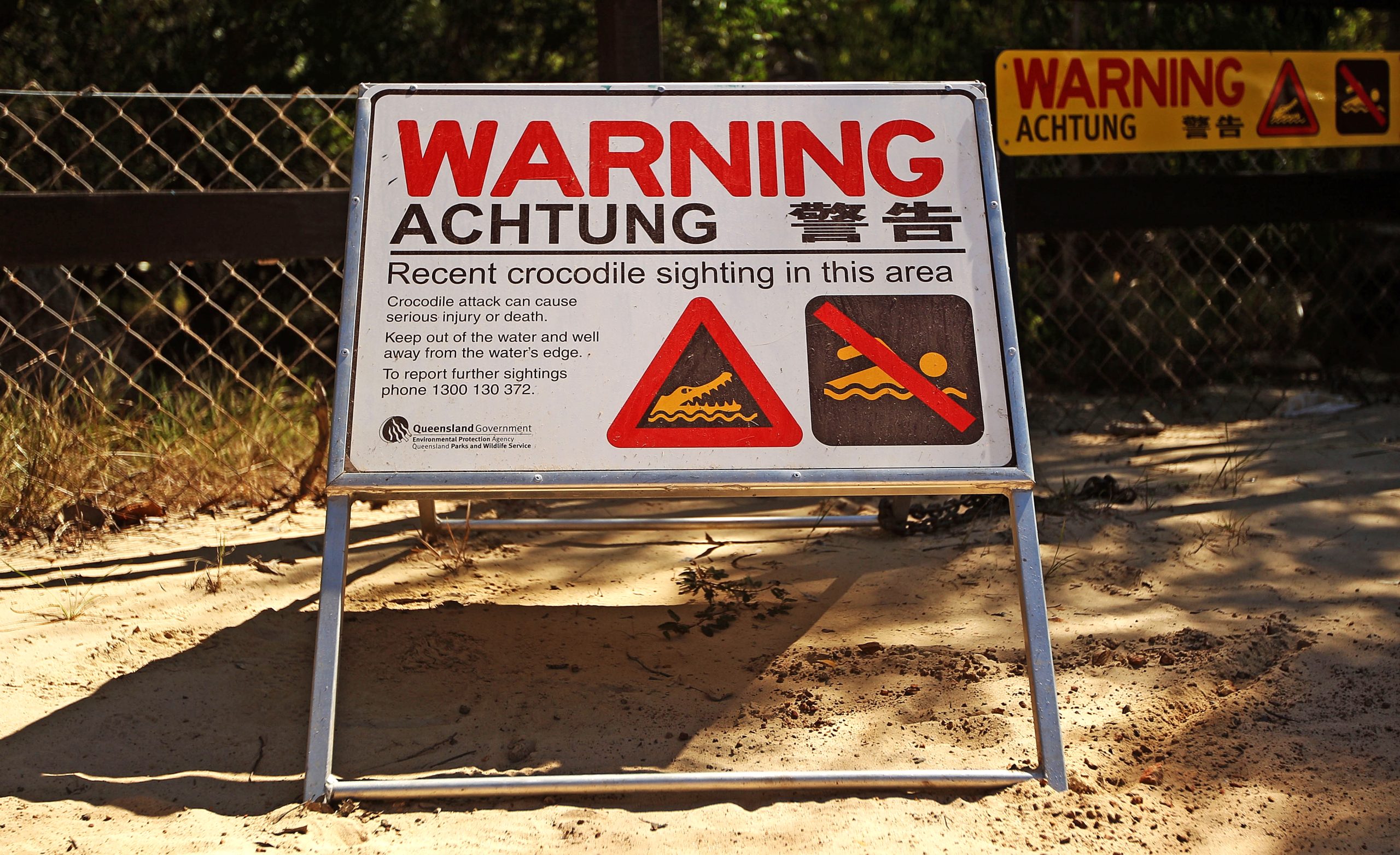
To expand on that, the DES tips on being
crocwise in croc country are:
• Obey all crocodile warning signs.
• Never swim in water where crocodiles may live, even if there is no obvious warning sign.
• Stay at least five metres from the water’s edge.
• Don’t leave food, fish scraps or bait near the water.
• Be extra cautious at night, dusk and dawn when crocodiles are most active.
• Do not use kayaks, paddle boards and other small craft in and around crocodile habitat.
• Be extra vigilant during the breeding season, which runs from September to April.
• Keep dogs on a lead and away from the water’s edge.
This stylish family home combines a classic palette and finishes with a flexible floorplan
Just 55 minutes from Sydney, make this your creative getaway located in the majestic Hawkesbury region.
Ahead of the Games, a breakdown of the city’s most desirable places to live
PARIS —Paris has long been a byword for luxurious living. The traditional components of the upscale home, from parquet floors to elaborate moldings, have their origins here. Yet settling down in just the right address in this low-rise, high-density city may be the greatest luxury of all.
Tradition reigns supreme in Paris real estate, where certain conditions seem set in stone—the western half of the city, on either side of the Seine, has long been more expensive than the east. But in the fashion world’s capital, parts of the housing market are also subject to shifting fads. In the trendy, hilly northeast, a roving cool factor can send prices in this year’s hip neighborhood rising, while last year’s might seem like a sudden bargain.
This week, with the opening of the Olympic Games and the eyes of the world turned toward Paris, The Wall Street Journal looks at the most expensive and desirable areas in the City of Light.
The Most Expensive Arrondissement: the 6th
Known for historic architecture, elegant apartment houses and bohemian street cred, the 6th Arrondissement is Paris’s answer to Manhattan’s West Village. Like its New York counterpart, the 6th’s starving-artist days are long behind it. But the charm that first wooed notable residents like Gertrude Stein and Jean-Paul Sartre is still largely intact, attracting high-minded tourists and deep-pocketed homeowners who can afford its once-edgy, now serene atmosphere.
Le Breton George V Notaires, a Paris notary with an international clientele, says the 6th consistently holds the title of most expensive arrondissement among Paris’s 20 administrative districts, and 2023 was no exception. Last year, average home prices reached $1,428 a square foot—almost 30% higher than the Paris average of $1,100 a square foot.
According to Meilleurs Agents, the Paris real estate appraisal company, the 6th is also home to three of the city’s five most expensive streets. Rue de Furstemberg, a secluded loop between Boulevard Saint-Germain and the Seine, comes in on top, with average prices of $2,454 a square foot as of March 2024.
For more than two decades, Kyle Branum, a 51-year-old attorney, and Kimberly Branum, a 60-year-old retired CEO, have been regular visitors to Paris, opting for apartment rentals and ultimately an ownership interest in an apartment in the city’s 7th Arrondissement, a sedate Left Bank district known for its discreet atmosphere and plutocratic residents.
“The 7th was the only place we stayed,” says Kimberly, “but we spent most of our time in the 6th.”
In 2022, inspired by the strength of the dollar, the Branums decided to fulfil a longstanding dream of buying in Paris. Working with Paris Property Group, they opted for a 1,465-square-foot, three-bedroom in a building dating to the 17th century on a side street in the 6th Arrondissement. They paid $2.7 million for the unit and then spent just over $1 million on the renovation, working with Franco-American visual artist Monte Laster, who also does interiors.
The couple, who live in Santa Barbara, Calif., plan to spend about three months a year in Paris, hosting children and grandchildren, and cooking after forays to local food markets. Their new kitchen, which includes a French stove from luxury appliance brand Lacanche, is Kimberly’s favourite room, she says.
Another American, investor Ashley Maddox, 49, is also considering relocating.
In 2012, the longtime Paris resident bought a dingy, overstuffed 1,765-square-foot apartment in the 6th and started from scratch. She paid $2.5 million and undertook a gut renovation and building improvements for about $800,000. A centrepiece of the home now is the one-time salon, which was turned into an open-plan kitchen and dining area where Maddox and her three children tend to hang out, American-style. Just outside her door are some of the city’s best-known bakeries and cheesemongers, and she is a short walk from the Jardin du Luxembourg, the Left Bank’s premier green space.
“A lot of the majesty of the city is accessible from here,” she says. “It’s so central, it’s bananas.” Now that two of her children are going away to school, she has listed the four-bedroom apartment with Varenne for $5 million.
The Most Expensive Neighbourhoods: Notre-Dame and Invalides
Garrow Kedigian is moving up in the world of Parisian real estate by heading south of the Seine.
During the pandemic, the Canada-born, New York-based interior designer reassessed his life, he says, and decided “I’m not going to wait any longer to have a pied-à-terre in Paris.”
He originally selected a 1,130-square-foot one-bedroom in the trendy 9th Arrondissement, an up-and-coming Right Bank district just below Montmartre. But he soon realised it was too small for his extended stays, not to mention hosting guests from out of town.
After paying about $1.6 million in 2022 and then investing about $55,000 in new decor, he put the unit up for sale in early 2024 and went house-shopping a second time. He ended up in the Invalides quarter of the 7th Arrondissement in the shadow of one Paris’s signature monuments, the golden-domed Hôtel des Invalides, which dates to the 17th century and is fronted by a grand esplanade.
His new neighbourhood vies for Paris’s most expensive with the Notre-Dame quarter in the 4th Arrondissement, centred on a few islands in the Seine behind its namesake cathedral. According to Le Breton, home prices in the Notre-Dame neighbourhood were $1,818 a square foot in 2023, followed by $1,568 a square foot in Invalides.
After breaking even on his Right Bank one-bedroom, Kedigian paid $2.4 million for his new 1,450-square-foot two-bedroom in a late 19th-century building. It has southern exposures, rounded living-room windows and “gorgeous floors,” he says. Kedigian, who bought the new flat through Junot Fine Properties/Knight Frank, plans to spend up to $435,000 on a renovation that will involve restoring the original 12-foot ceiling height in many of the rooms, as well as rescuing the ceilings’ elaborate stucco detailing. He expects to finish in 2025.
Over in the Notre-Dame neighbourhood, Belles demeures de France/Christie’s recently sold a 2,370-square-foot, four-bedroom home for close to the asking price of about $8.6 million, or about $3,630 a square foot. Listing agent Marie-Hélène Lundgreen says this places the unit near the very top of Paris luxury real estate, where prime homes typically sell between $2,530 and $4,040 a square foot.
The Most Expensive Suburb: Neuilly-sur-Seine
The Boulevard Périphérique, the 22-mile ring road that surrounds Paris and its 20 arrondissements, was once a line in the sand for Parisians, who regarded the French capital’s numerous suburbs as something to drive through on their way to and from vacation. The past few decades have seen waves of gentrification beyond the city’s borders, upgrading humble or industrial districts to the north and east into prime residential areas. And it has turned Neuilly-sur-Seine, just northwest of the city, into a luxury compound of first resort.
In 2023, Neuilly’s average home price of $1,092 a square foot made the leafy, stately community Paris’s most expensive suburb.
Longtime residents, Alain and Michèle Bigio, decided this year is the right time to list their 7,730-square-foot, four-bedroom townhouse on a gated Neuilly street.
The couple, now in their mid 70s, completed the home in 1990, two years after they purchased a small parcel of garden from the owners next door for an undisclosed amount. Having relocated from a white-marble château outside Paris, the couple echoed their previous home by using white- and cream-coloured stone in the new four-story build. The Bigios, who will relocate just back over the border in the 16th Arrondissement, have listed the property with Emile Garcin Propriétés for $14.7 million.
The couple raised two adult children here and undertook upgrades in their empty-nester years—most recently, an indoor pool in the basement and a new elevator.
The cool, pale interiors give way to dark and sardonic images in the former staff’s quarters in the basement where Alain works on his hobby—surreal and satirical paintings, whose risqué content means that his wife prefers they stay downstairs. “I’m not a painter,” he says. “But I paint.”
The Trendiest Arrondissement: the 9th
French interior designer Julie Hamon is theatre royalty. Her grandfather was playwright Jean Anouilh, a giant of 20th-century French literature, and her sister is actress Gwendoline Hamon. The 52-year-old, who divides her time between Paris and the U.K., still remembers when the city’s 9th Arrondissement, where she and her husband bought their 1,885-square-foot duplex in 2017, was a place to have fun rather than put down roots. Now, the 9th is the place to do both.
The 9th, a largely 19th-century district, is Paris at its most urban. But what it lacks in parks and other green spaces, it makes up with nightlife and a bustling street life. Among Paris’s gentrifying districts, which have been transformed since 2000 from near-slums to the brink of luxury, the 9th has emerged as the clear winner. According to Le Breton, average 2023 home prices here were $1,062 a square foot, while its nearest competitors for the cool crown, the 10th and the 11th, have yet to break $1,011 a square foot.
A co-principal in the Bobo Design Studio, Hamon—whose gut renovation includes a dramatic skylight, a home cinema and air conditioning—still seems surprised at how far her arrondissement has come. “The 9th used to be well known for all the theatres, nightclubs and strip clubs,” she says. “But it was never a place where you wanted to live—now it’s the place to be.”
With their youngest child about to go to college, she and her husband, 52-year-old entrepreneur Guillaume Clignet, decided to list their Paris home for $3.45 million and live in London full-time. Propriétés Parisiennes/Sotheby’s is handling the listing, which has just gone into contract after about six months on the market.
The 9th’s music venues were a draw for 44-year-old American musician and piano dealer, Ronen Segev, who divides his time between Miami and a 1,725-square-foot, two-bedroom in the lower reaches of the arrondissement. Aided by Paris Property Group, Segev purchased the apartment at auction during the pandemic, sight unseen, for $1.69 million. He spent $270,000 on a renovation, knocking down a wall to make a larger salon suitable for home concerts.
During the Olympics, Segev is renting out the space for about $22,850 a week to attendees of the Games. Otherwise, he prefers longer-term sublets to visiting musicians for $32,700 a month.
Most Exclusive Address: Avenue Junot
Hidden in the hilly expanses of the 18th Arrondissement lies a legendary street that, for those in the know, is the city’s most exclusive address. Avenue Junot, a bucolic tree-lined lane, is a fairy-tale version of the city, separate from the gritty bustle that surrounds it.
Homes here rarely come up for sale, and, when they do, they tend to be off-market, or sold before they can be listed. Martine Kuperfis—whose Paris-based Junot Group real-estate company is named for the street—says the most expensive units here are penthouses with views over the whole of the city.
In 2021, her agency sold a 3,230-square-foot triplex apartment, with a 1,400-square-foot terrace, for $8.5 million. At about $2,630 a square foot, that is three times the current average price in the whole of the 18th.
Among its current Junot listings is a 1930s 1,220-square-foot townhouse on the avenue’s cobblestone extension, with an asking price of $2.8 million.
This stylish family home combines a classic palette and finishes with a flexible floorplan
Just 55 minutes from Sydney, make this your creative getaway located in the majestic Hawkesbury region.















